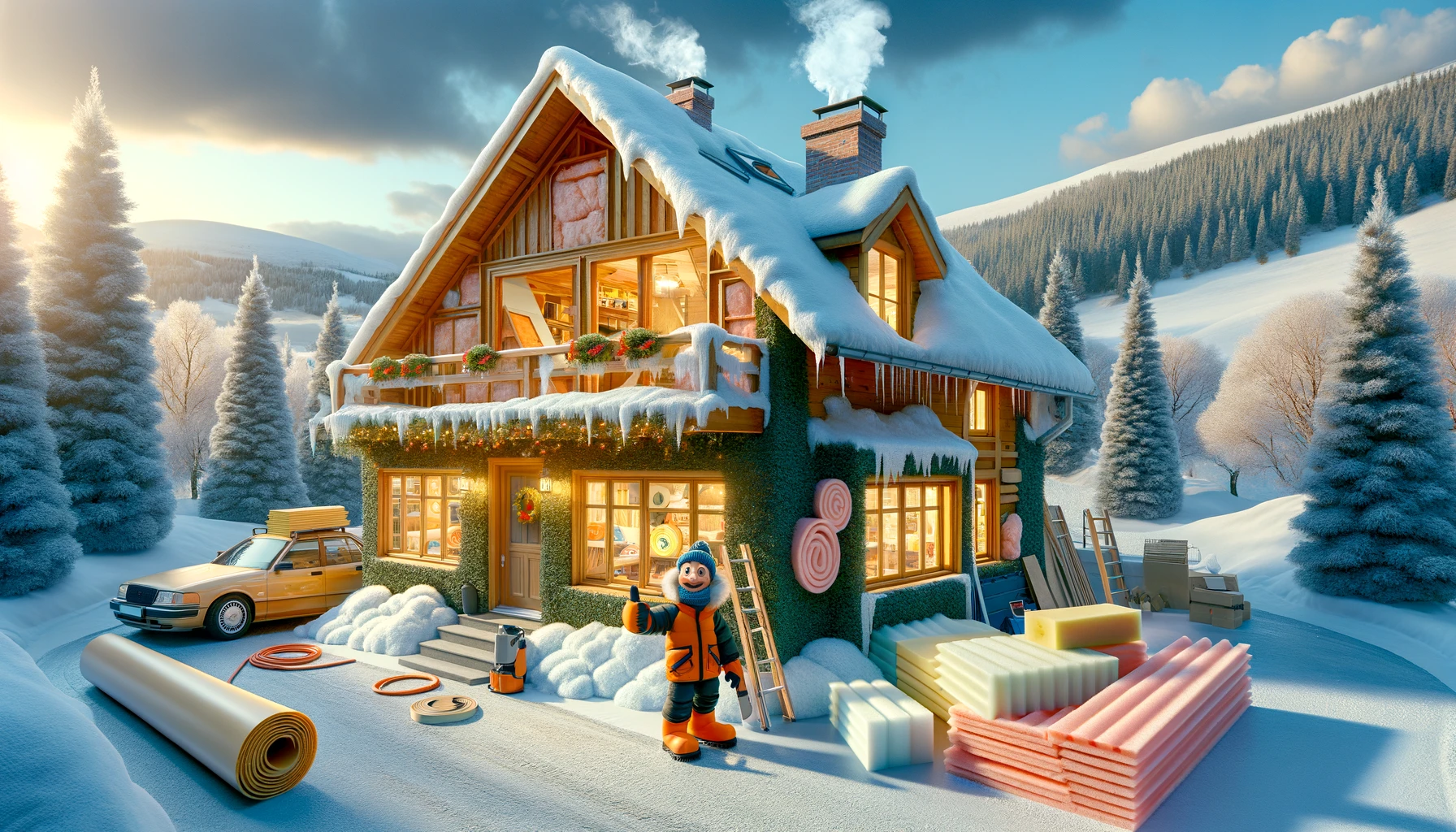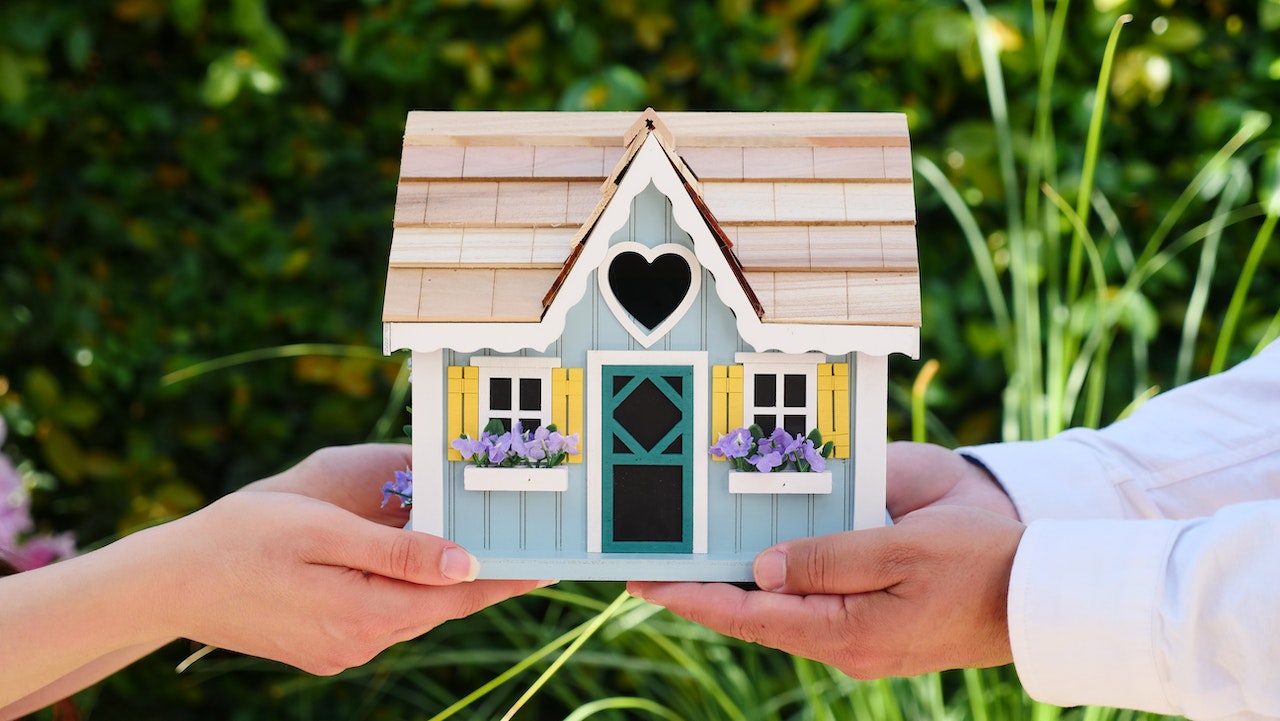Yes, dear homeowner, while others are out there debating the next big tech gadget or the trendiest fashion, you’ve got your priorities straight – figuring out the best way to insulate your castle. Because who needs the latest iPhone when you can revel in the joys of reduced energy bills and a toasty living room, right?
Insulation 101: Your Home’s Invisible Shield
Before we dive into the wild world of insulation types, let’s take a moment to understand what insulation is and why it’s as crucial to your home as caffeine is to your morning routine.
Insulation, my dear friend, is the silent hero of your house. It’s a material that’s used to keep your home warm in the winter and cool in the summer, like a climate-controlling superhero. Think of insulation as your home’s invisible shield against the whims of Mother Nature, battling the extremes of heat and cold so you can lounge in your pajamas comfortably.
Why is this important, you ask? Well, without insulation, your home would be as effective at maintaining a comfortable temperature as a paper bag is at holding a bowling ball – not very. Insulation helps to reduce the amount of heat that escapes from your home in the winter (because we all know heat is a sneaky little escape artist) and prevents the scorching summer heat from turning your living room into a makeshift sauna.
The Benefits of Insulating Your Home
Aside from the obvious benefit of not turning into a human popsicle in winter or a walking puddle in summer, insulation has a few other perks up its sleeve:
- Energy Efficiency: Insulation is like the eco-friendly buddy who reminds you to turn off the lights. By maintaining a more consistent temperature, it reduces the need to crank up the heater or air conditioner, leading to lower energy bills. And who doesn’t like saving money?
- Soundproofing: If you’ve ever wanted to dull the sound of your neighbor’s late-night karaoke sessions, insulation’s got your back. It’s great at absorbing sound, making your home a tranquil haven of peace and quiet.
- Moisture Control: Insulation is not just about temperature; it also helps keep moisture at bay, preventing the dreaded mold and mildew from crashing your home party.
- Environmental Impact: By using less energy for heating and cooling, you’re also reducing your carbon footprint. It’s like giving Mother Nature a high-five.
Now that you’re all warmed up with the knowledge of what insulation is and why it’s as essential as your morning coffee, let’s strut into the world of insulation types. Trust me, it’s more exciting than it sounds!
Insulation Types
1. Fiberglass: The Pink Panther’s Favorite
Let’s start with an oldie but a goodie – fiberglass insulation. Ah, the pink stuff that looks like cotton candy but is definitely not edible (trust me on this). This classic insulation material is made from fine glass fibers and is as popular as that one hit wonder song you can’t get out of your head. Why? It’s relatively cheap, easy to install (if you’re into the whole DIY scene), and it’s pretty good at its job – which is keeping your house warm in the winter and cool in the summer. Plus, it’s like giving your house a big, fluffy hug. Who doesn’t want that?
2. Cellulose: Party Like It’s 1693
Next up, we have cellulose insulation. This stuff is like the hipster of insulation materials – it’s made from recycled paper, mainly newspapers, and is treated with fire retardants. Yes, you’re essentially stuffing your walls with the news of yesteryears. It’s a great way to insulate and reminisce about headlines from the past. Cellulose is great for the environment and your utility bills, but be warned – if you’re planning to DIY, prepare for a day filled with more dust than a Sahara Desert sandstorm.
3. Spray Foam: The Space-Age Goop
Moving on to the modern marvel of insulation – spray foam. This is like giving your home a tight sealant hug with a space-age twist. It’s made from a delightful chemical concoction that expands and hardens into a solid mass. Think of it as that expanding foam toy you had as a kid but for adults and with less fun involved. Spray foam fills in all those nooks and crannies, making it excellent for sealing air leaks. It’s like Botox for your house – fills in the wrinkles and makes everything look a bit tighter.
4. Mineral Wool: Not From Sheep, Sorry
Next, let’s talk about mineral wool. No, it’s not sheared off some rock creature. It’s actually made from molten glass, stone, or industrial waste spun into fibrous material. It’s like fiberglass’s distant, slightly more sophisticated cousin. Mineral wool is great at soundproofing, so if you’re trying to drown out the noise of your neighbor’s questionable music choices, this might be your go-to.
5. Rigid Foam Boards: Like Yoga Mats for Your Walls
Enter rigid foam boards, the yoga mats of the insulation world. These boards are perfect for those who like their insulation like they like their mattresses – firm and supportive. Made from materials like polystyrene, polyisocyanurate (try saying that three times fast), and polyurethane, these boards are like giving your house a stiff, insulating hug. They’re great for reducing heat conduction through wood, a.k.a. making sure your house isn’t conducting its own heat orchestra.
6. Reflective Insulation: It’s Disco Time
Now, let’s add some pizzazz with reflective insulation. This is for those who believe their attic could double as a disco. Made from aluminum foil (yes, like the stuff in your kitchen) bonded to plastic film, cardboard, or kraft paper, this insulation reflects heat away from your home. It’s like having a giant mirror in your attic saying, “No thank you” to the sun’s relentless heat. Plus, who doesn’t love the idea of a disco ball in the attic?
7. Cotton Insulation: Denim Dreams
Cotton insulation is basically your favorite jeans turned into a home-warming material. This eco-friendly option is made from recycled denim – yes, your old jeans could be keeping someone’s house warm. It’s like a fashion statement for your walls. Plus, it’s treated with a fire retardant, so it’s safe (and stylish). If you’re into green living and have a soft spot for denim, this is your insulation soulmate.
8. Sheep’s Wool: For the Shepherds at Heart
Last but not least, sheep’s wool insulation. For those who like a rustic touch to their home insulating experience, this one’s for you. It’s natural, renewable, and can absorb and release moisture without losing its insulating properties – it’s basically the Swiss Army knife of insulation. So, if you ever wanted to feel like a shepherd insulating your home with the fruits of your flock, now’s your chance.
And there you have it – more insulation types than you probably ever wanted to know existed. Whether you’re into the classics like fiberglass, the eco-warrior choices like cotton and wool, or the space-age wonders of spray foam, there’s an insulation type to suit your home’s needs and your unique sense of humor. Remember, insulating your home is like dressing for the weather – you’ve got to choose the right layers to stay comfortable. Until next time, stay insulated and stay sassy!
Pro Tips: Mastering the Art of Insulation
If you are still here, it means that you are really into this. So, let’s arm you with some pro tips. These nuggets of wisdom are like the secret sauce that makes a good insulation choice great.
- Know Your R-Values:
R-value is like the IQ score for insulation. It measures how well the insulation resists heat flow. The higher the R-value, the better the insulation’s effectiveness. It’s like comparing a thin windbreaker to a thick down jacket – you want the one that keeps you warmest in a snowstorm.
- Consider the Climate:
Just like you wouldn’t wear flip-flops in a blizzard, the type of insulation you choose should match your climate. If you’re in a colder region, aim for a higher R-value to keep Jack Frost at bay. In warmer climates, you can go with a lower R-value but don’t skimp on it – insulation also keeps the heat out!
- Don’t Forget Air Sealing:
Insulation is only as good as the air sealing that accompanies it. Think of air leaks like tiny thieves stealing your warm or cool air. Use caulk and weather-stripping to seal up those leaks and keep your conditioned air where it belongs – inside.
- Ventilation is Vital:
Insulation isn’t about sealing your home in a bubble. Proper ventilation is crucial to prevent moisture problems and ensure air quality. Ensure your attic and crawl spaces are well-ventilated to keep the air fresh and mold at bay.
- Consider Eco-Friendly Options:
If you’re environmentally conscious, explore eco-friendly insulation options like cellulose, cotton, or sheep’s wool. They’re effective and kinder to the planet, like giving Mother Nature a warm hug.
- Professional vs. DIY:
While some insulation types are DIY-friendly (like batts of fiberglass or rolls of mineral wool), others (like spray foam) are best left to the pros. Assess your skills realistically – it’s not just about saving money but also about effective installation.
- Regular Checks and Upgrades:
Over time, insulation can settle, degrade, or become less effective. Regularly check your insulation and consider upgrades or additional insulation, especially if your home is older. It’s like a health check-up but for your house.
- Safety First:
If you’re going DIY, gear up appropriately. Wear protective clothing, gloves, a mask, and safety goggles. Insulation materials can be itchy and irritating, and safety should always be your first priority.
Frequently Asked Questions: The Insulation Edition
This depends on the type of insulation and your level of handiness. Fiberglass batts and rolls, and some forms of board insulation, are more DIY-friendly. However, for more complex types like spray foam, or if you’re as handy as a penguin with a hammer, it might be wise to call in the professionals.
If you’re experiencing uneven temperatures, high energy bills, or your home turns into an icebox or sauna with little provocation, these could be signs of insufficient insulation. Also, if your insulation is visibly damaged or thinning, it’s time for an upgrade.
Absolutely not! Insulation is like a climate mediator; it keeps your home cool in the summer by resisting heat entry. So, whether you’re dodging the summer sun or bracing against winter winds, insulation is your friend.
Dense materials like mineral wool (rock or slag wool), and heavy foam boards are great for soundproofing. They act like noise-canceling headphones for your home, keeping unwanted sound out (or in, if you’re the one making noise).
The longevity of insulation depends on the type and how well it’s maintained. Fiberglass, for example, can last 80 to 100 years, while cellulose might have a shorter life span. But, like milk in your fridge, it’s good to check it regularly for signs of wear or degradation.
Yes, eco-warriors! Options like cellulose (recycled paper), cotton (recycled denim), sheep’s wool, and certain types of foam boards are more environmentally friendly. They reduce your carbon footprint while keeping you comfy.
This depends on your home’s location, existing insulation, and your specific energy needs. Check the recommended R-values for your area and consult with a professional if you’re unsure. It’s like tailoring a suit; it needs to fit your home’s unique measurements.
Yes, over-insulating can lead to issues like moisture problems and reduced ventilation. Balance is key. You want to insulate effectively without turning your home into an airtight bubble.



